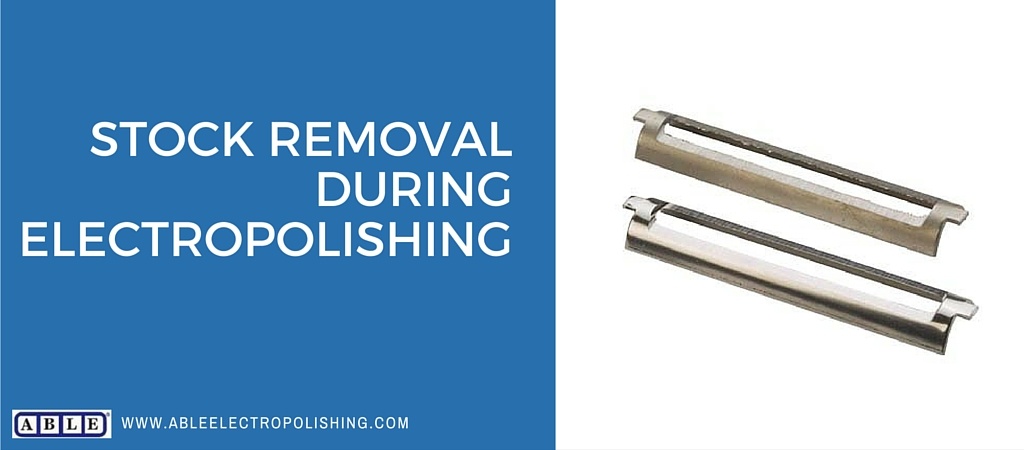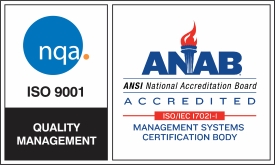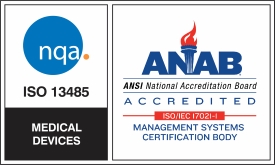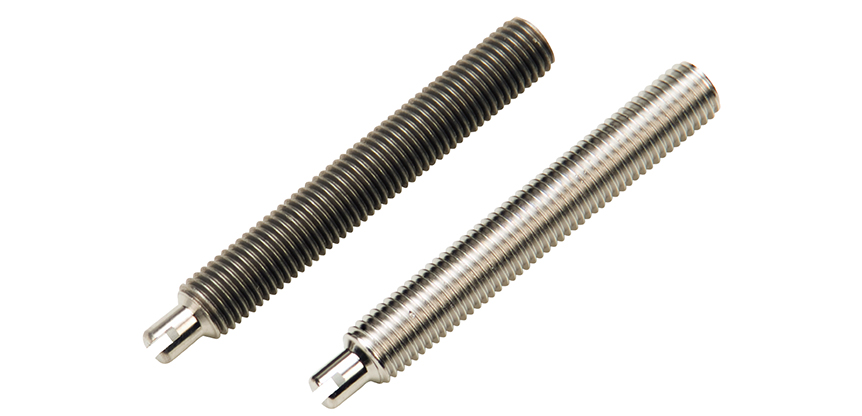
Often the last step in the manufacturing process, electropolishing is a “reverse plating” process that removes the outer skin of metal instead of depositing metal on the surface. . The process removes a uniform layer of metal from parts’ surface to remove surface defects. Using a combination of chemicals and electrical current, electropolishing carefully removes surface imperfections and contaminants from metal parts removing as little as .0002”” up to .003”” (.0001” to .0015” per surface) to produce the desired surface finish
Recommended Ranges for Stock Removal During Electropolishing
While there is no industry standard for stock removal on metal parts, Able recommends a range of .0005" to .001" (.00025” to .0005” per surface). When removing more than .003" material from a part’s thickness or diameter, the surface uniformity will be compromised.
Determining Amount of Stock Removal
While standard recommended ranges work well for many components, the optimal amount of material removed during electropolishing depends largely on the desired final finish. Factors that help determine how much stock should be removed from a part include the following:
Presence and size of burrs
Electropolishing can effectively remove micro burrs from the surface of metal parts. Parts with large burrs require more stock to be removed to effectively achieve a burr-free surface. Parts with macro burrs may also require pre-treatment prior to electropolishing to achieve a burr-free surface.
Desired final Ra value
Electropolishing can reduce Ra values as much as 50% when removing .001” material. Therefore, it’s important to know a part’s current Ra value and the desired final Ra value to determine if electropolishing alone can achieve the final desired value.
Print tolerance
It is critical to calculate how much material can be removed from the part to remain within the print size tolerances. After determining the proper stock removal through sampling, you may have to adjust part size/material thickness to allow for the material removal.
Desired surface finish
Depending on its final application, some parts may require a very bright and smooth finish while others may not. A brighter, smoother finish requires more stock removal.
Alloy properties
The alloy of a particular part can also determine the total amount of stock removal. Certain alloys such as aluminum and carbon steels may require additional stock removal to yield an acceptable finish.
These combined factors, will determine the optimal amount of stock that should be removed from a part. Incorrect material removal can lead to parts that no longer have the proper fit and function for the application it was designed for.
The Importance of Sampling and Prototyping
Prior to sending production parts for electropolishing, submitting samples is highly recommended for most parts because of the uniqueness of each part. The sales team at Able Electropolishing works with engineers to test and determine the optimal amount of stock to be removed to achieve the final desired surface finish for a part and its given application.
This is especially important in industries and applications that have tight manufacturing controls such as the aerospace and medical industry.
Why Choose Electropolishing?
Electropolishing offers a variety of benefits including deburring, microfinish improvement, ultracleaning, improved corrosion resistance, fatigue life improvement and sizing. In addition to these benefits, electropolishing is suitable for nearly any alloy. Moreover, electropolishing works well for fragile parts where other finishing processes such as tumbling or mechanical polishing cannot. Able’s ability to design and produce tooling in-house quickly makes our electropolishing an ideal choice for customers requiring short lead times.
Interested in learning more about the benefits of electropolishing or have more questions on stock removed during the process? Contact Able Electropolishing today!






